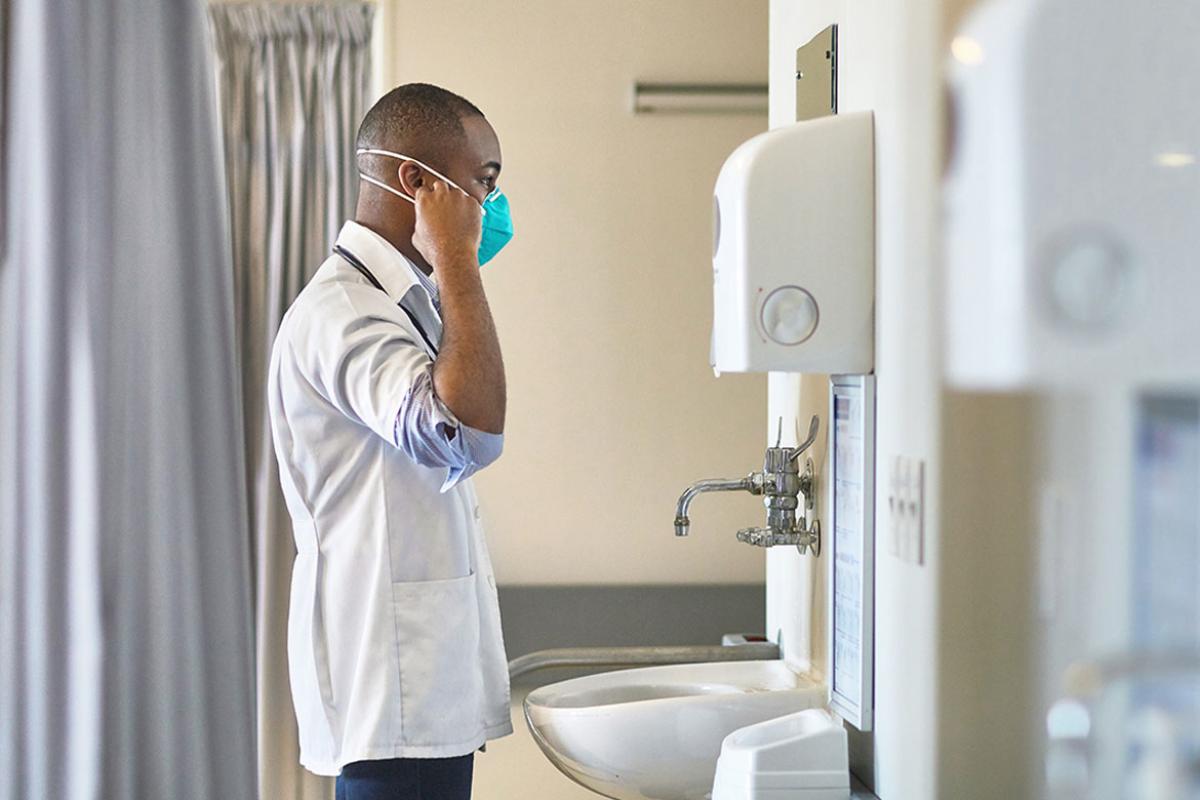In the health care universe, the long white coat symbolizes prestige and progress, but it’s hardly a measure of one’s ability to spark change in the community. Just ask AMA member Anusha Singh.
Now a third-year medical student at The Ohio State University (OSU) School of Medicine, Singh’s leadership journey took root during her college days at OSU. In 2018, she founded a group called Period OSU to advocate policies to improve patients’ access to menstrual products.
Her efforts have included work to repeal state sales taxes that hit tampons and mobilizing a grassroots movement for menstrual equity.
How did she move from campus leader to speaking in the statehouse? Singh offered these actionable tips for medical students interested in leading at the local level.
For medical students looking to hone their leadership skills, the AMA offers the chance to distinguish yourself through more than 1,000 leadership opportunities and skill building through online training modules, project-based learning and more.
Find your crew
Leadership isn’t a solo act. When leading on an issue, Singh emphasized the importance of forming a coalition from the start.
“The first step is building a team,” she said. “Finding other students who are also interested in the same cause as you. And really brainstorm together.”
When you find your team, you can comprehensively assess the situation and chart a course to make an impact.
If there’s a policy solution, the next step might be “meeting with your lawmakers, or if there's legislation that's been introduced, you could reach out to the sponsors and meet with them,” Singh said.
“When you are on the same page as your team and a group of you go into a meeting like that, you see that many voices are a lot more powerful than just a single person sitting in a meeting.”
Dive deeper:
- A medical student leader’s advice: Listen first, act second
- What you need to know to get started as a medical student leader
- 3 keys to boosting your medical student leadership skill set
Arm others with information
One of Singh’s major contributions as a health care activist has been writing a road map for others.
She has created toolkits to guide others on how to advocate, covering topics such as how to give testimony and identify the right people to contact. She also has helped run policy bootcamps.
Singh’s toolkit made advocacy accessible enough that Michigan high school students used it to rally support for repealing the tampon tax in their state.
“We were able to get more than 70 people to submit written testimony for the Michigan bill,” she said.
Ladder up
When she became a medical student, Singh grew her leadership from campus meetings to state and national advocacy.
Working with the Ohio State Medical Association, Singh co-wrote a resolution advocating no-cost menstrual products in schools. This advocacy helped lead to $5 million for free menstrual products in Ohio schools. (The AMA has similar policy calling for increased access to hygiene and menstrual products.) She also worked with her peers at Period OSU to set up a meeting with lawmakers and draft legislation that became part of a bill that eventually passed the Ohio statehouse.
Singh’s leadership extended to the national stage through her election as the Midwest Regional Alternate Delegate for the AMA Medical Student Section (AMA-MSS).
“Getting grassroots support from the medical community really brought momentum to our cause,” Singh said. “It’s been nice to be able to lean on more people as we do this work together to pass more equitable legislation.”
Dive deeper:
- What I wish I knew in medical school about student leadership
- What it takes to find success as a medical student leader
- Leadership 101: What medical students need to know
Amplify your message
Another key step in taking an advocacy issue national is effective use of social media.
Singh co-led the first grassroots #NationalPeriodDay campaign, mobilizing tens of thousands of young people to rally and pressure lawmakers to prioritize menstrual equity legislation. The 2019 effort influenced five presidential candidates to publicly support the issue, making it a trending topic on X, the social media service that was then known as Twitter.
The campaign, Singh said, was powered by personal stories. '“My most important lesson that I've learned is that your story really matters,” she said. “What really compels lawmakers the most is [knowing] why you are personally passionate about something.”
The Michigan tampon tax was repealed in 2022.
Persistence is paramount
Change isn’t a fast process. In 2019, after years of campaigning for the repeal of the Ohio tampon tax, the law was repealed. Four days earlier, Period OSU held a rally at the Ohio state house.
In the years since, many states that had taxes affecting tampons have also followed suit.
“Don’t underestimate the power of your own voice,” Singh said. “When we started doing all this, I really didn’t think lawmakers would value us and what we said, but this work taught me that we do have the power to drive a lot of change.”




